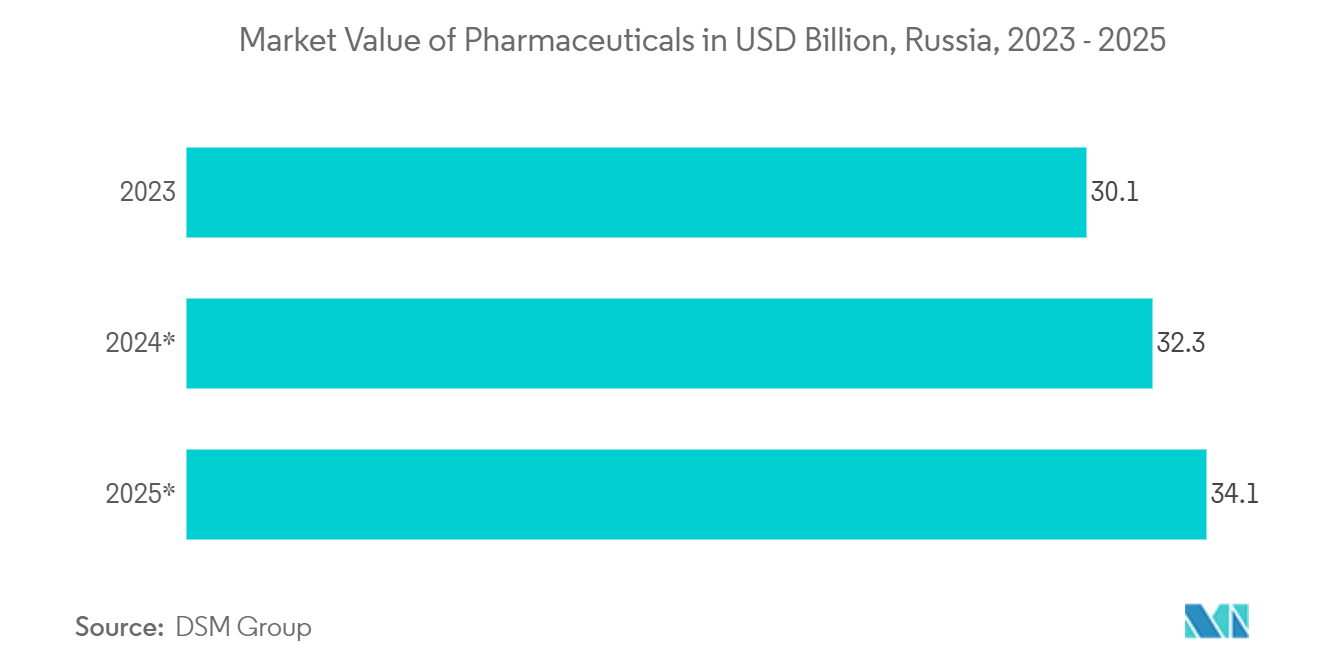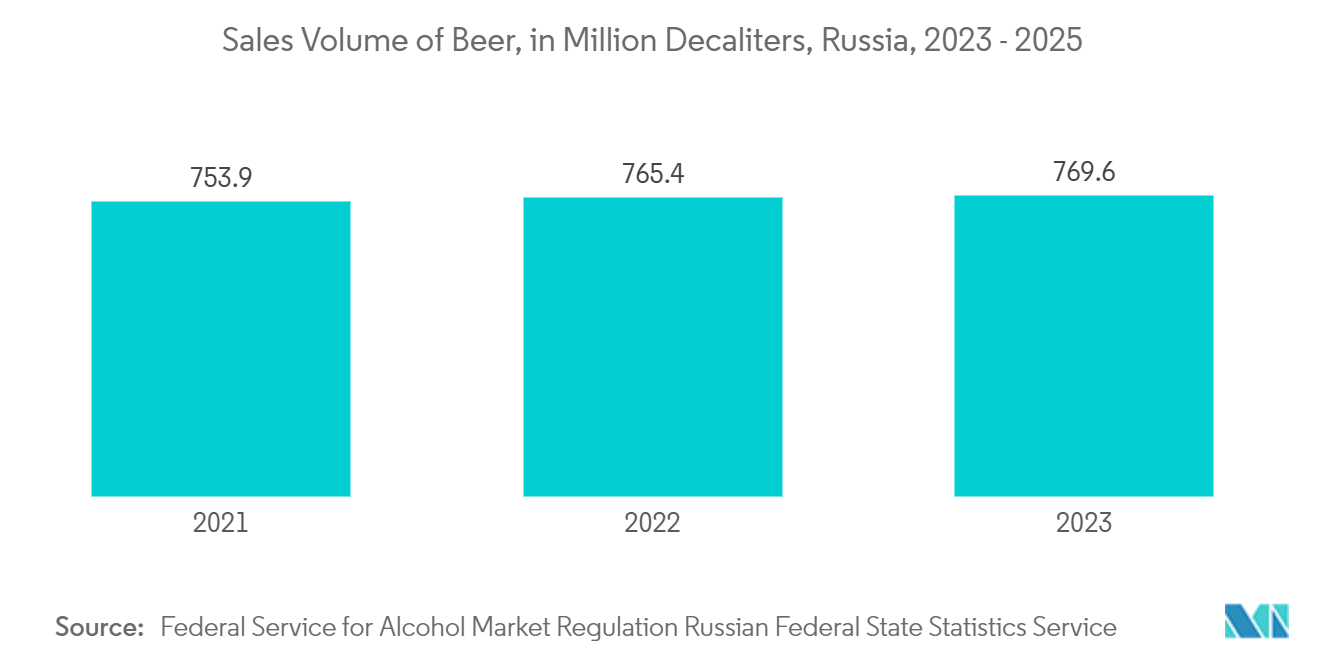Market Trends of Russia Glass Packaging Industry
Bottles and Containers to Hold Significant Market Share
- Glass bottles are extensively used in the pharmaceutical industry for packaging medicinal drugs. These bottles are manufactured to meet specific tolerance limits, as they are often filled on high-speed production lines. Glass is considered a viable packaging option due to its lower impact on human health and the environment than polyethene terephthalate (PET), making it an environmentally preferable packaging medium. The pharmaceutical industry values glass bottles for their inert properties, which help maintain drug stability and prevent chemical interactions between the container and its contents.
- Glass bottles offer excellent barrier properties against moisture and gases, preserving drug efficacy throughout their shelf life. The transparency of glass allows for easy visual inspection of the contents, which is crucial for quality control in pharmaceutical manufacturing and distribution processes. Furthermore, glass bottles can be easily sterilised and reused, contributing to sustainable packaging practices in the industry.
- The Russian pharmaceutical market reached USD 30.1 billion in 2023, a 0.2% increase from the previous year. Forecasts project the value of pharmaceutical sales to reach USD 34.1 billion by 2025. This growth in the pharmaceutical industry is driving demand for packaging solutions, particularly for communicable and non-communicable disease treatments. Consequently, there is an increasing need for glass packaging in pharmaceutical manufacturing. Glass packaging protects medicinal products against damage, bioaccumulation, and environmental factors.
- The rising demand for pharmaceutical drugs and medicines, coupled with technological advancements in the industry, directly contributes to the increased need for glass packaging solutions such as bottles and vials. As the Russian pharmaceutical market expands, the demand for high-quality glass packaging is expected to grow proportionally, ensuring the safe storage and distribution of various medications and treatments. This trend supports the pharmaceutical industry's growth and presents opportunities for glass packaging manufacturers to innovate and meet the market's evolving needs.
- Further, the primary factor driving the demand for glass bottles and containers in food packaging is the increasing need for food preservation. Glass provides an effective barrier against moisture, air, and other contaminants, helping to preserve the freshness, flavour, and nutritional value of food products for extended periods. Additionally, glass does not react with or leach chemicals into food, making it an ideal choice for packaging food products, particularly for sensitive items such as baby food.
- A diverse range of food products is packaged in glass containers, including instant coffee, processed baby foods, dry mixes, spices, dairy products, sugar preserves (jams and marmalades), syrups, spreads, processed fruits and vegetables, fish and meat products, mustards, and condiments. These products encompass various forms, from dry powders and granules to liquids, some of which are carbonated and packed under pressure, as well as heat-sterilized products.

Beverages Segment to Witness Significant Growth Rate
- The primary factor driving the demand for glass bottles and containers for beer in Russia is their ability to preserve taste and flavour. Glass packaging excels in maintaining product quality, making it the preferred choice for beer and cider manufacturers. Glass bottles, particularly in brown and green colours, provide essential UV protection for beer, safeguarding its taste and flavour from light and heat exposure. This protection is crucial for preserving the beer's quality during storage and transportation.
- Clear (flint) glass bottles are preferred for the alcoholic segment. They allow the product's colour and clarity to be showcased while still offering protection. Glass's inert nature ensures that it does not interact with the contents, further preserving the authentic taste of the beverages. These characteristics, combined with glass's recyclability and premium appearance, make glass bottles and containers the ideal packaging solution for alcoholic products in the Russian market, meeting the industry's functional and aesthetic requirements.
- Beer was the highest-selling alcoholic beverage in Russia, with sales exceeding 769 decaliters in 2023. This indicates a strong demand for beer and, consequently, for glass packaging used in beer bottles. The popularity of beer in Russia reflects consumer preferences and has implications for the packaging industry, particularly glass manufacturers. As beer is often sold in glass bottles, the high sales volume suggests a corresponding demand for glass packaging solutions. This trend may influence production strategies for glass manufacturers and impact the overall glass packaging market in Russia.
- Growing consumer interest in sustainability in Russia has led brewing companies to collaborate with glass bottle and container manufacturers. This partnership strategy aims to offer beer products in glass bottles, aligning with sustainability goals and meeting consumer preferences. These companies can develop eco-friendly packaging solutions, reduce waste, and improve recycling efforts by working together.
- The use of glass bottles not only addresses environmental concerns but also appeals to consumers who are increasingly conscious of the environmental impact of their purchasing decisions. This trend reflects a broader shift in the Russian beer market towards more sustainable practices and products, potentially influencing long-term industry strategies and consumer behaviour.
- Further, wine packaged in glass bottles offers a premium experience through design, elegance, and heritage. The unique aesthetics of glass bottles provide a luxury that other packaging materials cannot match. Wine is often used for gifting purposes on special occasions in developed countries.
- Consequently, wine packaged in distinctive glass bottles is advantageous over alternative packaging solutions. The combination of visual appeal, tactile quality, and cultural significance associated with glass bottles enhances the overall perception of the wine, making it a preferred choice for consumers seeking a refined and sophisticated product presentation.


